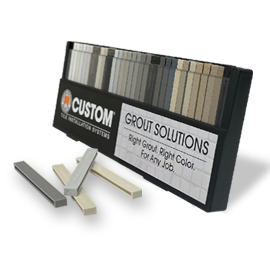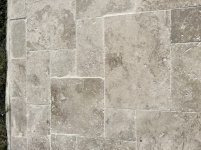Katodude
Silver Supporter
- Aug 22, 2017
- 3,004
- Pool Size
- 15000
- Surface
- Plaster
- Chlorine
- Salt Water Generator
- SWG Type
- Hayward Aqua Rite (T-15)
The Prism grout is tricky. First clean the area with a pressure washer.
Then you need to pick a color you like. I happen to like linen. It almost matches my travertine and it end up giving it a lighter color, which I like.
Now here is the tricky part. You will have to work in small batches the Prism drys very fast. Also the consistency is important. It seems to last longer when mixed to a thicker consistency. Which again reduces your working time.
Go buy a box of it (they sell it at HomeDepot, I had to order it online to get the color I wanted). Mix up a small batch and do small section to test how it looks and holds up. After about a week hit that section with a pressure washer to see if it flakes up. If it does you probably mixed it too thin. Practice until you get it right.
Then you need to pick a color you like. I happen to like linen. It almost matches my travertine and it end up giving it a lighter color, which I like.
Now here is the tricky part. You will have to work in small batches the Prism drys very fast. Also the consistency is important. It seems to last longer when mixed to a thicker consistency. Which again reduces your working time.
Go buy a box of it (they sell it at HomeDepot, I had to order it online to get the color I wanted). Mix up a small batch and do small section to test how it looks and holds up. After about a week hit that section with a pressure washer to see if it flakes up. If it does you probably mixed it too thin. Practice until you get it right.



